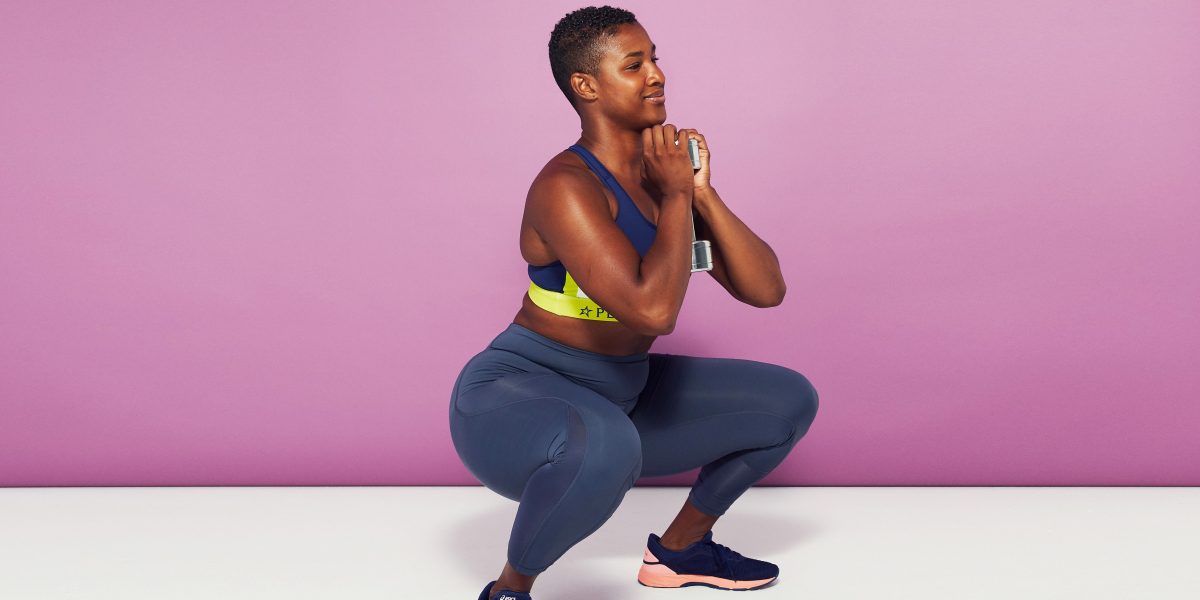Doing knee-strengthening exercises is probably not your number one priority when you visit the gym or plan your at-home workout routine. You may think that knee exercises only matter if you’re an avid marathoner or an elite athlete who’s constantly pummeling the joint. But that’s actually not true: Taking the time to strengthen this important area can go a long way toward boosting overall movement capabilities and reducing injury risk—for anyone.
Your knees play a pivotal role in a lot of daily activities, whether that’s climbing and descending the stairs, running to catch the bus, or even just walking your dog around the neighborhood. As you perform these movements, the knees (along with the feet and ankles) absorb a lot of force, Kellen Scantlebury, DPT, CSCS, founder of Fit Club NY, tells SELF. Because of this, “it’s really important that the knee and the muscles that surround the knee are working optimally,” says Scantlebury.
For that reason, it’s a good idea for all of us to do knee-strengthening exercises, whether we think we need them or not, Kate Bochnewetch, DPT, CSCS, founder of the Running DPT in Buffalo, New York, tells SELF.
With that in mind, we tapped Bochnewetch and Scantlebury for 10 awesome knee-strengthening exercises you can do at home. The experts also shared intel on the best ways to strengthen your knees and why strong knees matter in the first place. Below, all you need to know about this super-important joint.
What are the benefits of strengthening the muscles around the knees?
The knee often follows the movements of the foot and hips, which means issues in either area above or below the knee joint can lead to problems in the knee itself, Scantlebury explains. By strengthening all of the important muscles around the knee, you can improve knee stability and alignment, ultimately protecting it from injury, she says.
Muscles that provide support to the knee include the quadriceps, a group of four muscles on the front thigh that help straighten out the knee and also assist in hip flexion, as well as the hamstrings, or the muscles on the back of your legs that contract at the same time as the quads to provide stability for your knee. Additionally, the glute muscles play a key role in keeping the hips and knees aligned and controlling the knee in side-to-side movements, and your tibialis anterior (muscle on the front part of your lower leg) and calf muscles in the back of the leg “help support the knee from below the joint,” says Scantlebury. Lastly, your adductors (inner thigh muscles) are important as well, since “people who have instability of their kneecap usually have weakness in the adductors or medial muscles in the thigh,” according to Scantlebury.
All the muscles mentioned above need to be strong enough to properly stabilize the knee and keep it safe when it moves—and that’s where knee-strengthening exercises come in.
Knee strength is crucial for overall knee health. And as we mentioned, it’s important for pretty much everyone. But knee-strengthening exercises for runners and other athletes whose sports involve high-impact moves are extra critical, says Bochnewetch. Because these people are asking a little bit more from their knees (and bodies in general), it’s extra important to make sure their joints are strong enough for the tasks at hand.
What are the best knee-strengthening exercises?
The best knee-strengthening exercises target the supporting muscles of the knee, including the quads, hamstrings and glutes, plus the muscles of the inner thighs, calves, and front of the leg. It’s especially key to hit all the muscles of the glutes, including the gluteus medius, a smaller butt muscle that helps your legs move out to the side (a movement called abduction). “It’s a really important muscle when it comes to knee health because that’s the muscle that prevents your knee from caving in when you’re doing single-leg activities,” says Bochnewetch. Yes, that means running, walking, and stair-climbing.
